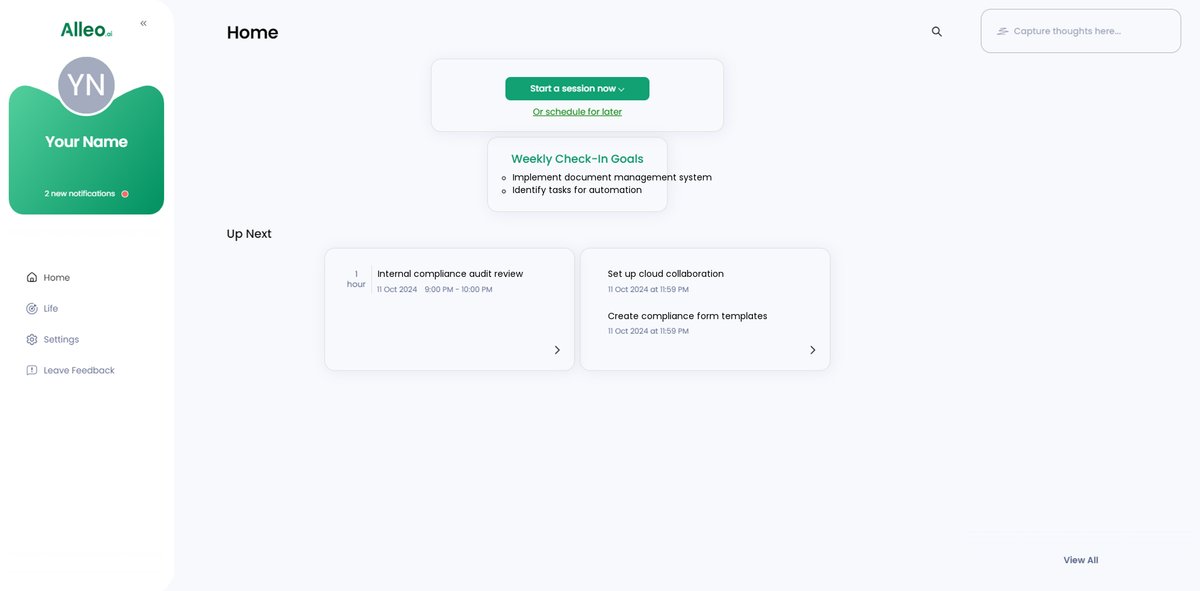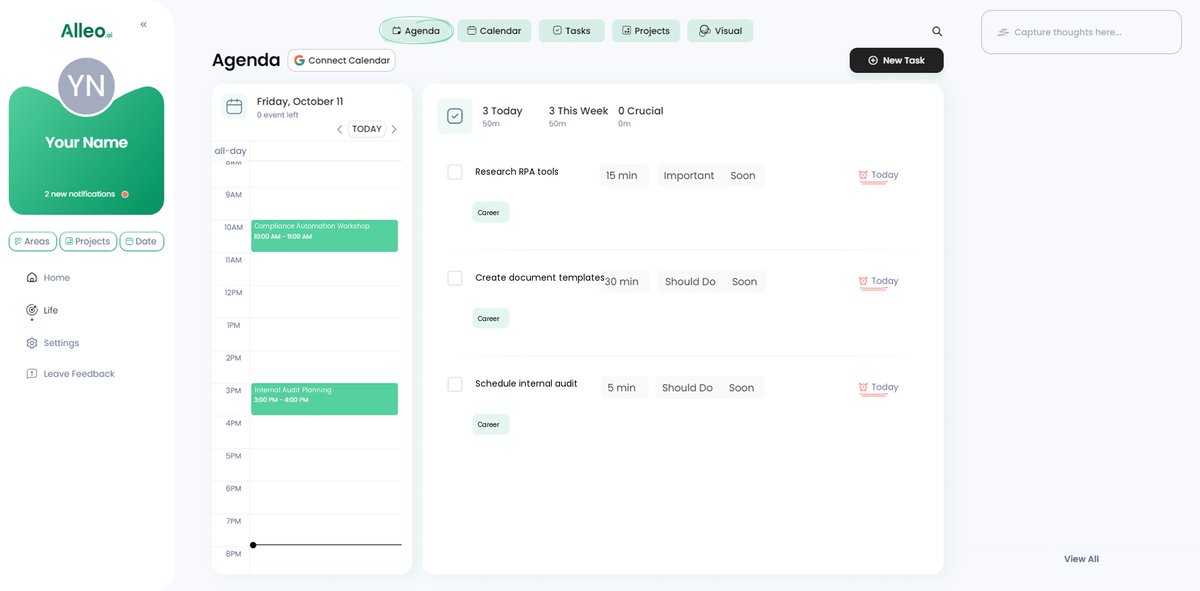5 Essential Best Practices for Streamlining Compliance Documentation for Busy Professionals
Are you overwhelmed by the endless compliance documentation during the busy season? Streamlining your compliance documentation process can help ease this burden.
As someone who has guided many accountants through the maze of compliance management and efficient document tracking methods, I understand the unique challenges you face with regulatory compliance checklists.
In this post, we will explore proven strategies to streamline your compliance documentation process. You will learn about implementing centralized document management systems, automating tasks with compliance automation tools, standardizing templates for simplified regulatory documentation processes, and more time-saving documentation techniques.
Stay with me, and let’s dive into digital record-keeping strategies and compliance workflow optimization to help you manage your paperless compliance solutions more effectively.

Why Compliance Documentation is a Major Pain Point
Let’s delve deeper into why compliance documentation can be so challenging. Many accountants face overwhelming amounts of documentation, often leading to significant time consumption and stress. Streamlining compliance documentation processes is crucial for addressing these issues.
In my experience, the complexity of regulatory standards amplifies this problem. Navigating through intricate compliance requirements can be daunting and exhausting. Implementing regulatory compliance checklists can help simplify these processes.
Moreover, inefficient documentation processes severely impact productivity. Accountants spend countless hours on manual data entry and paperwork, leaving little time for other essential tasks. Utilizing compliance automation tools and digital record-keeping strategies can significantly reduce this burden.
Several clients report spending up to 2,000 hours per year on compliance activities. This staggering figure highlights the urgent need for streamlined processes and efficient document tracking methods.
Clearly, finding effective strategies to manage compliance documentation is crucial. Implementing document management systems and focusing on compliance workflow optimization can help streamline compliance documentation processes and alleviate these pain points.

Roadmap to Streamlining Compliance Documentation
Overcoming this challenge requires a few key steps to streamline compliance documentation processes. Here are the main areas to focus on to make progress.
- Implement a centralized document management system: Choose a system that suits your firm’s needs and organize all documents efficiently, enhancing digital record-keeping strategies.
- Automate repetitive compliance tasks with RPA: Use compliance automation tools to handle data entry and document generation, optimizing compliance workflows.
- Standardize templates for common compliance forms: Develop and update regulatory compliance checklists regularly to maintain consistency and simplify regulatory documentation processes.
- Use cloud-based tools for real-time collaboration: Facilitate seamless teamwork with paperless compliance solutions like Microsoft 365 or Google Workspace.
- Conduct regular internal audits to ensure readiness: Schedule audits to identify and address compliance gaps, utilizing efficient document tracking methods.
Let’s dive in to explore these time-saving documentation techniques and compliance reporting shortcuts!
1: Implement a centralized document management system
Implementing a centralized document management system is crucial for streamlining compliance documentation processes.
Actionable Steps:
- Research and select a document management system tailored to your firm’s needs. Evaluate features such as search functionality, version control, and access permissions to optimize your compliance workflow.
- Organize all existing compliance documents in the new system. Create a standardized filing structure and ensure all team members are trained on its use, incorporating efficient document tracking methods.
- Integrate the document management system with other compliance automation tools used by your firm. Set up automated workflows to streamline document routing and approval processes, enhancing your regulatory compliance checklists.
Explanation: A centralized document management system ensures all compliance documents are easily accessible and well-organized. This reduces time spent searching for files and minimizes the risk of errors, effectively streamlining the compliance documentation process.
According to Secureframe, efficient document management is crucial for maintaining compliance and passing audits. Moreover, integrating this system with existing tools enhances productivity and collaboration, supporting digital record-keeping strategies.
Key benefits of a centralized document management system:
- Improved document accessibility and organization
- Enhanced version control and audit trails
- Streamlined collaboration and approval processes, facilitating compliance reporting shortcuts
By implementing a centralized document management system, you can reduce stress and ensure your compliance documentation is always audit-ready, effectively streamlining your compliance documentation process.

2: Automate repetitive compliance tasks with RPA
Automating repetitive compliance tasks with Robotic Process Automation (RPA) can significantly reduce the time burden on busy professionals and help streamline compliance documentation processes.
Actionable Steps:
- Identify repetitive compliance tasks that can be automated. Conduct a thorough task audit to pinpoint time-consuming manual processes in your regulatory compliance checklists.
- Implement RPA tools to handle these tasks. Use RPA and compliance automation tools for automating data entry, document generation, and reporting to optimize compliance workflow.
- Monitor and refine automated processes for maximum efficiency. Regularly review RPA performance and adjust as necessary to ensure accuracy and compliance, improving your digital record-keeping strategies.
Explanation: Automating repetitive tasks with RPA enhances efficiency and reduces human error in compliance documentation processes.
According to RunSensible, document automation can save professionals time by autofilling templates and guiding users through necessary clauses, offering time-saving documentation techniques.
By implementing RPA to streamline compliance documentation processes, you can focus on more strategic tasks while maintaining compliance.
This transition to automation allows you to manage your workload better, reducing stress and increasing productivity through efficient document tracking methods and paperless compliance solutions.

3: Standardize templates for common compliance forms
Standardizing templates for common compliance forms is essential for streamlining the compliance documentation process and ensuring consistency and efficiency.
Actionable Steps:
- Develop standardized templates for frequently used compliance forms. Collaborate with your team to identify the most common forms and establish a consistent format, utilizing compliance automation tools where possible.
- Regularly update templates to reflect current regulations. Assign a compliance officer to oversee template updates and maintain regulatory compliance using digital record-keeping strategies.
- Train staff on using standardized templates to ensure consistency. Conduct training sessions and provide reference materials for staff, focusing on efficient document tracking methods.
Explanation: Standardized templates streamline the compliance documentation process by providing a uniform structure for compliance forms. This approach minimizes errors and ensures that all forms comply with current regulations, supporting compliance workflow optimization.
According to RunSensible, standardizing document templates increases consistency and allows for quick customizations. By implementing this method, you’ll save time and enhance the accuracy of your compliance documentation, effectively utilizing time-saving documentation techniques.
Consider these key aspects when standardizing templates to streamline the compliance documentation process:
- Consistency in formatting and language
- Inclusion of all necessary regulatory requirements, possibly incorporating regulatory compliance checklists
- Flexibility for easy updates as regulations change, supporting simplified regulatory documentation processes
This strategy helps maintain high standards in compliance management, setting the stage for smoother audits and less stress while leveraging paperless compliance solutions.

4: Use cloud-based tools for real-time collaboration
Using cloud-based tools for real-time collaboration is essential for keeping your team in sync and ensuring compliance documentation is always up-to-date. This approach can significantly streamline compliance documentation processes.
Actionable Steps:
- Select cloud-based collaboration tools that meet your firm’s needs. Evaluate options like Microsoft 365, Google Workspace, or industry-specific platforms for efficient document management systems.
- Implement these tools across your team. Set up shared workspaces and establish protocols for document editing and sharing to optimize compliance workflow.
- Leverage cloud-based tools to enhance remote work capabilities. Enable remote access to compliance documents and ensure robust security measures, supporting digital record-keeping strategies.
Explanation: Cloud-based tools facilitate seamless teamwork, allowing team members to collaborate on compliance documents in real-time. This approach reduces the risk of outdated information and errors, effectively streamlining the compliance documentation process.
According to Docketwise, cloud storage in legal document management systems allows instant access to documents from anywhere, enhancing flexibility for remote work and supporting efficient document tracking methods.
Implementing these tools ensures that your compliance documentation is accurate, current, and readily accessible, supporting paperless compliance solutions.
Adopting cloud-based collaboration tools can transform your compliance processes, making them more efficient and less stressful, ultimately helping to streamline compliance documentation processes.

5: Conduct regular internal audits to ensure readiness
Regular internal audits are vital for maintaining compliance and ensuring your documentation is always audit-ready, helping to streamline compliance documentation processes.
Actionable Steps:
- Schedule regular internal audits to review compliance documentation. Create an audit calendar and assign a dedicated team to conduct these audits, utilizing compliance automation tools for efficiency.
- Use audit results to identify and address any compliance gaps. Develop action plans to remediate issues and improve processes, incorporating digital record-keeping strategies.
- Continuously improve audit processes based on feedback and findings. Implement lessons learned from each audit to enhance future readiness and optimize compliance workflows.
Explanation: Regular internal audits help identify and rectify compliance issues before they escalate. This proactive approach ensures your documentation meets regulatory standards and is consistently up-to-date, effectively streamlining the compliance documentation process.
According to EPA, self-auditing can foster voluntary discovery and correction of violations, promoting a culture of compliance. Conducting these audits regularly will help you stay ahead and manage your compliance tasks effectively using efficient document tracking methods.
Key benefits of regular internal audits:
- Early detection and resolution of compliance issues
- Continuous improvement of compliance processes
- Increased preparedness for external audits
This strategy ensures you are always prepared for external audits, reducing stress and improving overall efficiency in your compliance documentation process.

Partner with Alleo to Streamline Your Compliance Documentation
We’ve explored the challenges of compliance documentation and how solving them can benefit your productivity. Did you know you can work directly with Alleo to make this journey easier and faster? Our compliance automation tools can help streamline your compliance documentation process efficiently.
Setting up an account with Alleo is simple. Start by creating a personalized plan tailored to your firm’s needs, including regulatory compliance checklists and digital record-keeping strategies.
Alleo’s AI coach will guide you through automating tasks, standardizing templates, and organizing documents using efficient document tracking methods. You’ll receive regular follow-ups on your progress, and the coach will handle changes and keep you accountable with text and push notifications, optimizing your compliance workflow.
Ready to get started for free? Let me show you how to streamline your compliance documentation process with our paperless compliance solutions!
Step 1: Logging in or Creating an Account
To begin streamlining your compliance documentation process, Log in to your existing Alleo account or create a new one if you haven’t already.

Step 2: Choose “Building better habits and routines”
Click on “Building better habits and routines” to start streamlining your compliance documentation processes, helping you establish efficient workflows that will save time and reduce stress during busy seasons.

Step 3: Select “Career” as Your Focus Area
Choose “Career” as your focus area to streamline your compliance documentation processes, enhance your professional efficiency, and reduce work-related stress, aligning perfectly with the strategies discussed for managing complex regulatory requirements in the accounting field.

Step 4: Starting a coaching session
Begin your journey with Alleo by scheduling an intake session, where our AI coach will assess your compliance documentation needs and create a personalized plan to streamline your processes.

Step 5: Viewing and Managing Goals After the Session
After your coaching session, access the goals you discussed by checking the home page of the Alleo app, where you can easily view and manage your compliance documentation objectives.

Step 6: Adding events to your calendar or app
Use the Alleo AI coach to easily add compliance-related events and tasks to your calendar or app, allowing you to track your progress in streamlining documentation processes and staying on top of deadlines.

Taking Control of Your Compliance Documentation
By now, you understand the importance of streamlining compliance documentation processes for busy professionals.
It’s clear that implementing a centralized document management system, automating tasks with compliance automation tools, and standardizing regulatory compliance checklists can make a difference.
Using cloud-based tools for collaboration and conducting regular internal audits are also essential steps in efficient document tracking methods.
These strategies will help you reduce stress and increase efficiency in your compliance workflow optimization.
Remember, you’re not alone in this journey to simplify regulatory documentation processes.
The Alleo coach is here to guide you every step of the way in streamlining your compliance documentation process.
Why not give Alleo a try and see the difference for yourself in implementing time-saving documentation techniques?
Take control of your compliance management today and experience the transformative benefits of paperless compliance solutions.